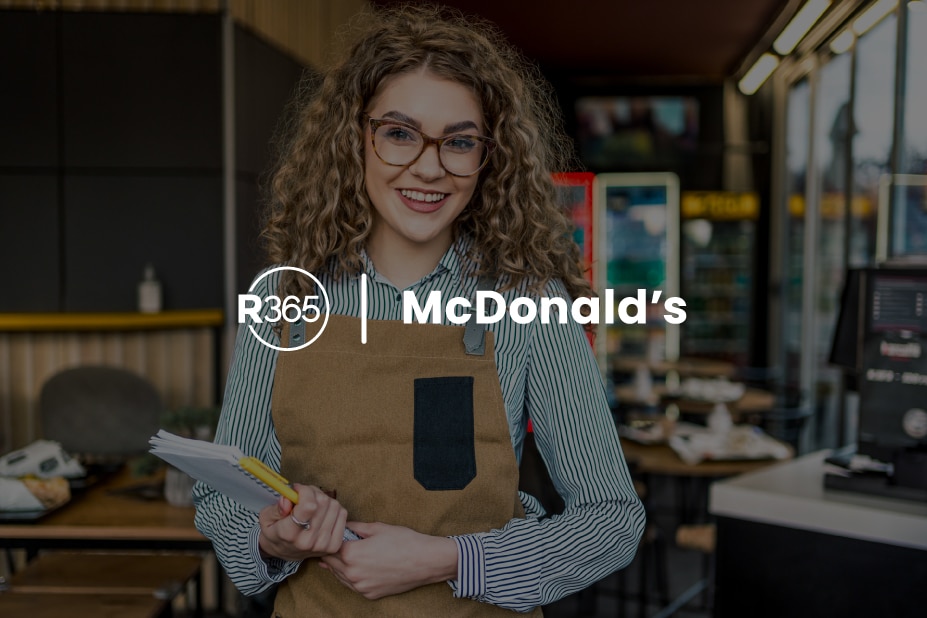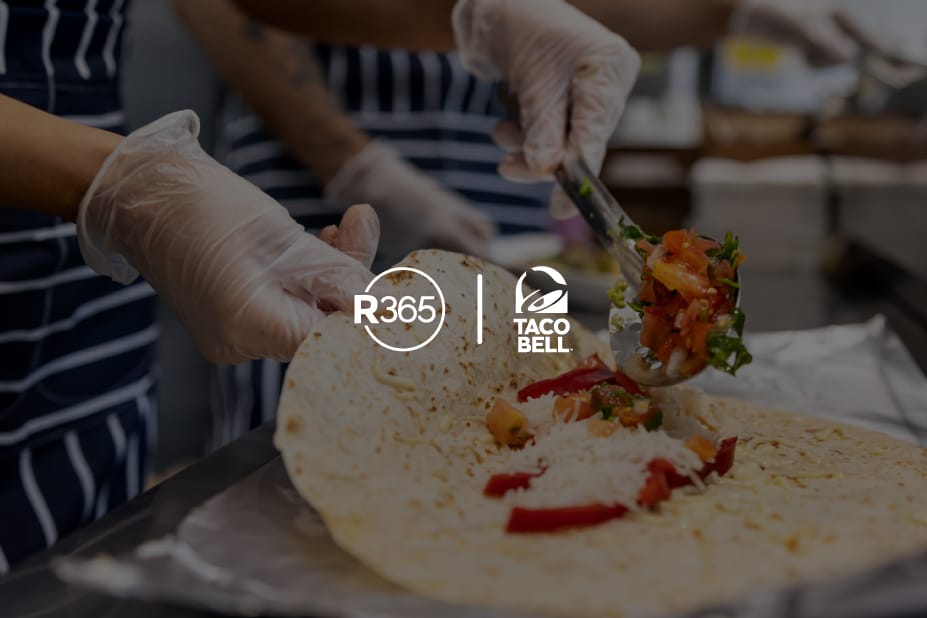As a restaurant owner or operator, you always have restaurant profitability on your mind. But when you think of restaurant profitability, are you thinking about both the short-term and the long-term?
Of course, there are small changes you can make in the short-term to benefit operations. However, much of improving your profitability requires the same discipline as it takes to create a new habit: improving operations incrementally over time.
Understanding your profitability and working to improve it, piece by piece, is the key to long-term restaurant success. Every time you add another dollar to your bottom line, you have more budget to invest in new strategies, whether that’s improving the guest experience or even opening up new locations.
So how do you drive long-term restaurant profitability?
Long-term profitability strategies
Essentially, improving your restaurant profit margin relies on two things: your sales volume and your expenses. You can achieve a better sales margin by increasing sales revenue and decreasing expenses.
Even if you are satisfied with your current profit margin, maintaining profitability in the long-term is not a given. Wages and food costs inevitably rise over time. You need to be constantly improving profitability so that food and wage costs don’t take over your restaurant profit margin.
Staying ahead of the game requires adding efficiencies into your operation and constantly investing in more revenue generation.
Long-term strategies can be difficult to fully visualize. So as you examine the tips below, think of breaking goals into the short, medium, and long term in each area.
In addition, consider implementing what is commonly referred to as “SMART” goals: Specific, Measurable, Achievable, Relevant, and Time-Bound). Instead of saying that you want a higher average check size, set a specific goal like, “in the next six months, we will increase the average check size by 3-5%.”Here are ten ways to drive long-term restaurant profitability, through increasing sales and decreasing expenses.
Increase sales volume
The first step for optimizing long-term profitability is to examine your sales revenue. The restaurant industry has been in flux for more than a year, but diners are finally starting to return for both indoor and outdoor dining. How do you take advantage of the rise in demand?
1. Drive More New Customers to Your Restaurants
First, focus on getting more customers in the door. Investing in marketing is a long-term strategy, but consistent effort can provide rewards.
Consider investing in signage in your local area or advertising in local publications. You can potentially explore digital marketing through targeted social media ads or online search results ads.
You can also examine classic ways of drawing in foot traffic, welcoming diners back to your restaurant. Specials or limited time promotions can cause a buzz or excitement about your restaurant and let potential guests know that you are once again open for in-person dining.
2. Nurture Repeat Business
Loyal customers are the base of your business, so investing in creating long-term relationships can pay off both now and later. Loyal customers return to your restaurant over and over, and they also refer friends and family to your business.
If you haven’t yet started a loyalty program, consider implementing one. Many restaurant management systems or Point of Sale (POS) systems now have the tools and features you need to implement rewards.
Reward programs can engage your customers, encouraging them to visit more often and participate in specials. Loyalty programs can also include incentives to encourage referrals, which is a win-win for both your loyal customer and your restaurant.
3. Promote Your Top-Selling, Highest-Margin Menu Items
Whether you are running specials for new customers or as a reward bonus for existing customers, be sure to be strategic about what menu items you feature. Any new promotion should optimize your food and labor spend.
To inform your decisions, leverage menu engineering to evaluate your pricing and profit margin on individual menu items. Menu engineering ranks menu items by profitability and popularity, showing which items are the “stars” of your menu. Since these star items are the most profitable and popular, they are great candidates for your promotions.
4. Increase Average Check Size
You only have a limited number of seats in your restaurant and table turns possible in a night. If you are looking to up your revenue with the same capacity, examine ways to increase your average check size.
Upselling, encouraging customers to buy more expensive menu items or additional add-on items, is your most direct tool for increasing check size.
Upselling requires you to train your servers. Your servers are your salespeople, so they should understand how to make recommendations about the most profitable items on the menu.
While your staff obviously needs to avoid being pushy, some upselling techniques can feel natural and also help diners have a more enjoyable meal. Servers can suggest what menu items complement each other, or when it may be a great option to upgrade a meal (adding a protein to a salad, for example, or selling sparkling water instead of filtered water). Over time, these upsell opportunities can add up to a larger average check size.
Decrease controllable expenses
After you evaluate how you approach increasing sales, you also want to work on optimizing expenses. You can increase sales revenue by 100%, but if your expenses increase at the same rate, you are left with the same restaurant profit margin.
Your restaurant profit margin depends on optimizing your two controllable expenses otherwise known as your prime cost: your food and labor costs.
5. Review CoGS and Labor Reports Daily
Your store-level managers need to constantly make new decisions, whether about scheduling or placing new purchasing orders. Your food and labor costs fluctuate by the hour, day, and week, so up-to-date data is essential to optimizing them. Timely data can give insight so managers are proactively planning instead of just reacting.
As mentioned, long-term profitability requires constant effort. Food cost and labor reports show where there can be small adjustments, which add up to large efficiencies over time. Start with examining your profit and loss (P&L) statement, which has an overview of all your revenue and expenses.
Adding in daily reviews of your cost of goods sold (CoGS) and your labor hours doesn’t need to be time consuming for your already-busy managers. Restaurant operations reporting software can automate much of the calculations and reporting, and some systems even allow you to automatically email reports to whomever needs them.
6. Set Sales Per Labor Hour (SPLH) Goals for Each Location
According to payroll experts, half of US states have already or will see minimum wage increases in 2021. Many other operators are proactively raising wages in response to the current labor shortage.
With increasing wages, it’s critical to optimize how you are using your labor hours. Setting up sales per labor hour (SPLH) goals can give you visibility into the details of your labor spend.
Tracking SPLH maps your sales and your labor hours, side by side. You can see which service periods are the most productive in terms of labor and start to analyze which day parts need different SPLH. For example, a limited breakfast menu based on selling drinks like coffee may require a different SPLH than a full dinner menu with courses and drinks. With this information in hand, your managers can create smarter schedules (more on that below).
SPLH can also help you spot shift management issues, like a low SPLH indicating overstaffing or a high SPLH potentially indicating gaps in customer service.
7. Create Schedules Strategically
Data should drive your labor cost decisions. Sales forecasts, based on historical data pulled from your POS, can help you create more efficient schedules.
If you are better able to project sales levels, you can save your labor hours for when employees are most needed. Give your managers the tools they need to make schedules based on forecasted sales levels and SPLH goals, giving them guard rails that will help them meet labor costs.
Of course, your managers may always need to make adjustments in the moment, using breaks, cuts, or call ins to tweak the schedule to real-time conditions. However, creating a strategic schedule to begin with can minimize last-minute changes and help maintain consistency for your staff.
8. Reduce Actual vs. Theoretical Food Cost Variance
Next to your labor, also take a look at your food cost. A tool like actual vs. theoretical (AvT) food cost analysis can provide critical insight into how you can improve your food cost.
Your AvT measures what inventory you should be using, assuming perfect portions and no mistakes, in contrast to what you are actually using. The food cost variance represents the food waste that comes from improper portioning, mistakes, or wasted ingredients. You can get granular with this variance, diving into individual ingredients and tracking down what, exactly, is responsible for the gap.
As your restaurant fluctuates over time, menu items may change. Tracking your AvT helps you maintain efficiency in your kitchen operations even if you are changing your menu and food costs.
9. Evaluate Suppliers and CoGS Regularly
Your inventory management is another critical part of maintaining an optimized food cost. Controlling your inventory cost through restaurant inventory management can require time and investment, but it pays dividends.
Tracking inventory invoices is key. Your restaurant is probably receiving multiple shipments from multiple vendors a week. It can be time consuming to review all inventory invoices, but a review is critical for spotting errors that can add up over time.
To streamline this process, automate inventory invoicing as much as possible through AP integration and automatic tools. Then use your restaurant operations reporting software to identify pricing errors and compare item pricing across locations. For example, view the average price paid for each item in a date range per store and then see the aggregated averages from lows to highs across all stores to show the variance between the store that is paying the lowest cost vs. the one that is paying the highest cost.
In addition, regularly evaluate your supplier relationships. While establishing long-term relationships with vendors can ensure consistency and beneficial contract terms, you also want to stay on top of local rates to ensure you are getting the best deal you can. Occasionally evaluate competitor pricing for your most-used ingredients, and if needed, consider renegotiating or changing contracts.
10. Focus on Restaurant Employee Retention
Finally, employee retention is a key piece of the expenses puzzle. High retention rates lead to long-term, loyal employees who benefit your restaurant.
Retention obviously has an enormous impact on your labor cost. It is expensive to hire a new employee. You need to recruit, hire, onboard, train, and invest in every new staff member. In the current labor crunch, this can be even more costly than before.
Focusing on restaurant employee retention is a more cost-effective approach to long-term financial health. After all, most of the above tips require a dedicated, talented staff to implement, day in and day out.
Conclusion
There isn’t a magic wand for long-term restaurant profitability. It requires focusing on various strategies throughout your restaurant. However, many of the most important strategies will also make operations run smoother, while adding money back to your bottom line. Long-term strategies require consistent effort, but with the right tools your restaurant can meet your short, medium, and long-term goals.
If your restaurant business is focused on long-term profitability, equip your team with tools that will help increase operational efficiency. Restaurant365 is an all-in-one restaurant management system incorporating restaurant accounting software, restaurant operations software, inventory management software, payroll + HR software, and scheduling software into a cloud-based platform that’s fully integrated with your POS system, as well as to your food and beverage vendors, and bank.



